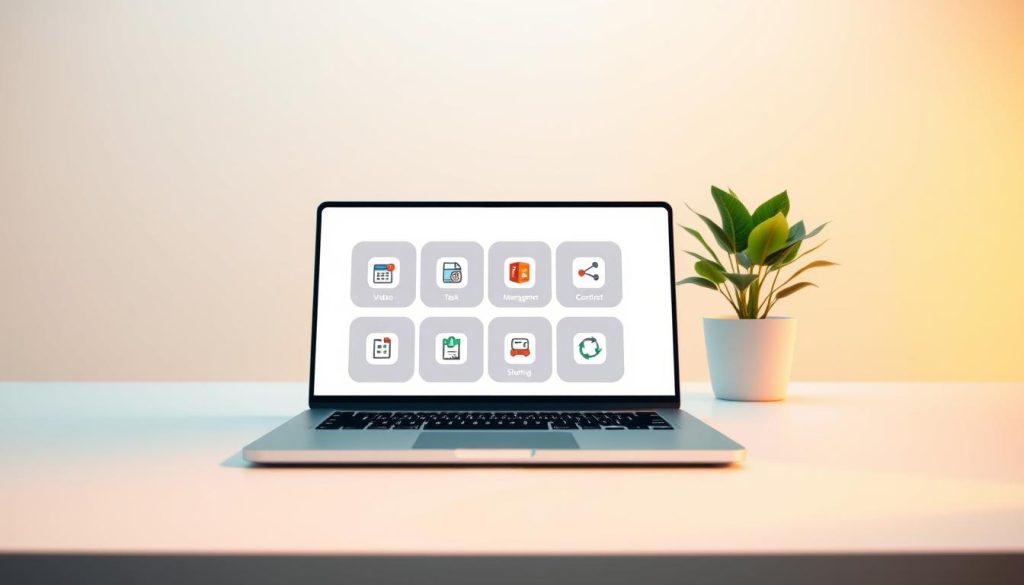Remember that moment when a team project clicked? When everyone understood their role, deadlines felt achievable, and collaboration flowed naturally? For many professionals, that harmony remains elusive – until they discover the power of structured collaboration frameworks.
Modern professionals face unique challenges. Remote work blurs boundaries. Hybrid schedules create communication gaps. A recent Atlassian study reveals teams using shared guidelines are 74% more likely to voice improvement ideas confidently. This isn’t about rigid rules – it’s about creating shared ownership of success.
Imagine documents that grow with your team. Tools that clarify expectations while allowing creative flexibility. These frameworks help distributed teams maintain cohesion across time zones, ensuring everyone contributes meaningfully.
We’ll explore how these dynamic tools differ from traditional contracts. You’ll learn to craft adaptable systems that balance stability with innovation – essential for today’s evolving professional landscape.
Table of Contents
Key Takeaways
- 74% of teams report increased confidence when using structured collaboration systems
- Flexible guidelines adapt better to remote/hybrid environments than fixed contracts
- Shared ownership models improve decision-making and problem-solving
- Clear communication standards reduce misunderstandings across time zones
- Living documents evolve with team needs for sustained success
Defining the Basics of Work Agreements
Clear guidelines form the backbone of effective teamwork. Unlike rigid contracts, modern collaboration frameworks act as compasses – guiding teams through complex projects while allowing flexibility. These living documents evolve with your needs, combining structure with adaptability.
What Are Collaborative Frameworks?
Collaborative frameworks (often called working agreements) outline how teams operate. They capture essential elements like communication rhythms, decision-making processes, and quality standards. In Agile environments, 83% of teams using these tools report smoother project transitions according to recent Scrum Alliance data.
Three core aspects differentiate them from traditional contracts:
- Dynamic adaptation: Regular reviews ensure relevance as projects evolve
- Shared ownership: All members contribute to creating/updating terms
- Process focus: Prioritizes how teams collaborate over strict deliverables
Essential Components for Success
Effective frameworks balance specificity with flexibility. Key elements include:
1. Communication Protocols
Define preferred channels, response times, and meeting rhythms. Remote teams often combine Slack for quick updates with weekly Zoom check-ins.
2. Role Clarity Matrix
Maps responsibilities without limiting creative input. Helps prevent overlaps in hybrid environments.
3. Conflict Resolution Pathways
Establishes escalation processes while encouraging peer-to-peer problem solving. Crucial for maintaining freelance contract parity in mixed teams.
These components create safety nets for professionals – 68% of independent contractors report increased confidence when using structured collaboration tools (2023 Upwork survey). By documenting expectations transparently, teams reduce misunderstandings while preserving individual autonomy.
Establishing Essential Terms and Conditions
Successful collaboration thrives on shared understanding. Clear terms act as guardrails, guiding teams through complex projects while preserving creative freedom. These frameworks become especially vital when coordinating across borders or time zones.
Setting Communication and Escalation Processes
Effective teams establish communication standards tailored to their needs. Define which platforms handle urgent requests versus routine updates. For example, Slack for quick questions, email for formal approvals. Set response time expectations to respect everyone’s workflow.
When conflicts arise, structured escalation paths prevent gridlock. The DACI framework clarifies roles:
- Driver: Owns task execution
- Approver: Makes final decisions
- Contributors: Provide expertise
- Informed: Receive updates
This approach reduces ambiguity during disagreements. For freelance collaborations, consider integrating freelance mission contracts into your escalation protocols to protect all parties.
Clarifying Roles and Responsibilities
Precision in role definition prevents overlap and gaps. Create a matrix outlining:
- Primary decision-makers
- Quality control owners
- Cross-functional liaisons
Document deliverables with measurable outcomes rather than vague descriptions. For instance, « Complete UX prototype by Friday » instead of « Contribute to design process. »
Regular role reviews maintain alignment as projects evolve. Teams using this method report 68% fewer task duplication issues (2023 Asana data). Balance individual autonomy with collective accountability to foster ownership without micromanagement.
Utilizing Templates and Digital Collaboration Tools

Professionals seeking efficiency in team coordination now have powerful digital allies. Pre-built templates and specialized platforms transform how groups establish collaborative frameworks, particularly for distributed members. These resources standardize processes while allowing customization – a balance that 78% of remote teams call essential in recent Slack surveys.
Leveraging Trello and Confluence Templates
Atlassian’s templates provide ready-made structures for team coordination systems. Confluence documents centralize member details like time zones and communication preferences. Trello boards visually map workflows with customizable fields for deadlines and responsibilities.
Key advantages include:
- Time savings: 60% faster setup than creating documents from scratch
- Consistency: Uniform formats across multiple projects
- Flexibility: Easy adjustments during quarterly reviews
Online Tools for Real-Time Collaboration
Modern platforms bridge geographical divides effectively. Features like simultaneous editing in Google Docs prevent version confusion. Video conferencing tools with screen sharing enable live workshops for refining team guidelines.
Visual collaboration apps like Miro replicate physical whiteboards digitally. Teams can:
- Brainstorm using virtual sticky notes
- Vote on proposed changes
- Archive discussion threads for future reference
Secure cloud storage ensures 24/7 access while maintaining professional standards. These solutions help 83% of hybrid teams maintain alignment according to 2023 Gartner data.
Work Agreements in Modern Team Environments
Effective collaboration hinges on evolving frameworks that grow with your team. These adaptable systems help professionals navigate shifting priorities while maintaining core standards – a critical balance in today’s dynamic workplaces.
Integrating Frameworks for New and Existing Teams
When adding new team members, structured guidelines act as onboarding accelerators. They clarify expectations about communication styles and decision-making processes. For example, define how quickly colleagues should respond to messages across different platforms.
Existing teams benefit from quarterly reviews of their collaboration standards. This practice helps integrate fresh perspectives while preserving proven workflows. A 2023 Gallup study shows teams updating their guidelines regularly experience 42% fewer misunderstandings.
Adapting to Distributed Work Dynamics
Hybrid environments demand clear protocols for remote work solutions. Establish « core hours » where all members overlap digitally, even across time zones. Use tools like shared calendars to visualize availability patterns.
Successful distributed teams often combine:
- Asynchronous documentation for reference
- Scheduled video check-ins for relationship-building
- Real-time collaboration windows for complex tasks
Aligning Standards to Boost Performance
Clear norms create psychological safety – 67% of professionals report increased contribution confidence in structured environments (2023 Harvard Business Review). Document how feedback gets shared and decisions get made to reduce ambiguity.
Regularly measure framework effectiveness through anonymous surveys. Adjust components like meeting frequency or project management tools based on team feedback. This approach keeps systems relevant as business needs evolve.
Enhancing Team Collaboration Through Practical Practices

Productive teamwork thrives when practical strategies meet structured flexibility. The right mix of communication methods and creative problem-solving techniques can transform how groups operate. Let’s explore actionable approaches that maintain momentum while respecting individual preferences.
Balancing Synchronous and Asynchronous Communication
Smart teams match their communication style to the task. Schedule meetings for complex discussions requiring real-time feedback. Use asynchronous methods like Loom videos for status updates or Confluence boards for brainstorming. This preserves focus time while keeping everyone informed.
| Communication Type | Best Use Cases | Recommended Tools | Key Benefit |
|---|---|---|---|
| Synchronous | Conflict resolution Creative brainstorming |
Zoom, Teams | Immediate feedback |
| Asynchronous | Progress updates Document reviews |
Slack, Loom | Flexible participation |
Establish clear guidelines: « Use video calls for decisions impacting multiple departments. Share written summaries within 24 hours. » This balance reduces meeting fatigue by 37% according to 2023 Buffer data.
Using Workshop Techniques to Refine Guidelines
Interactive sessions generate better solutions than solo drafting. Try these proven methods:
- Diverge & Converge: Individuals brainstorm ideas separately, then merge the best concepts
- Reverse Brainstorming: Identify potential failures to strengthen prevention measures
- 1-2-4-All: Progress from solo reflection to group consensus in structured phases
These approaches help teams uncover hidden concerns while building ownership. After implementing these techniques, 82% of groups report improved decision transparency in a recent MIT study.
Regular refinement sessions keep guidelines relevant. Schedule quarterly reviews using collaborative boards to track evolving needs. This maintains alignment as projects and priorities shift.
Conclusion
Building a sustainable independent career requires foundations that grow with your ambitions. Collaborative frameworks provide the structure professionals need while preserving creative freedom. These dynamic systems establish clarity without rigidity – adapting to new projects while maintaining core standards.
Regular reviews keep your guidelines impactful. Schedule quarterly check-ins to refine communication rhythms and decision processes. Tools like DevDynamics simplify tracking with customizable templates and progress alerts, helping teams stay aligned as priorities shift.
Embrace these strategies to strengthen professional relationships and project outcomes. The techniques and templates discussed empower you to balance autonomy with accountability. For deeper insights into establishing effective partnerships, explore our guide to understanding work contracts and collaboration best practices.
Your path to confident, secure teamwork starts here. Implement these living frameworks today – they’ll evolve as you do, supporting every stage of your independent journey.
FAQ
Why are written terms critical for team collaboration?
Clear terms reduce misunderstandings by documenting expectations, deadlines, and accountability. They create a shared reference point, ensuring alignment even when priorities shift or new members join.
How do digital tools like Trello improve agreement management?
Platforms like Trello or Confluence centralize documents, track updates, and enable real-time feedback. Templates standardize processes, while @mentions and comment threads simplify escalation paths.
Can existing teams revise their norms mid-project?
Yes. Regular retrospectives let teams assess what’s working and adapt. For example, hybrid teams might adjust meeting frequencies or async check-in protocols based on feedback.
What’s the difference between roles and responsibilities in these agreements?
Roles define a member’s position (e.g., « Project Lead »), while responsibilities outline specific tasks (« approve budgets by Friday »). Both prevent overlaps and clarify decision-making authority.
How do workshops strengthen team dynamics?
Structured sessions encourage open dialogue about pain points. Techniques like brainstorming or role-playing uncover gaps in workflows, leading to mutually agreed solutions.
Are verbal agreements sufficient for remote teams?
Written terms are non-negotiable for distributed teams. Time zones and digital communication increase misinterpretation risks. Documented processes ensure consistency across locations.
What metrics indicate a successful team agreement?
Track reduced conflicts, faster decision-making, and meeting attendance rates. Surveys can measure clarity of roles or satisfaction with communication channels.





